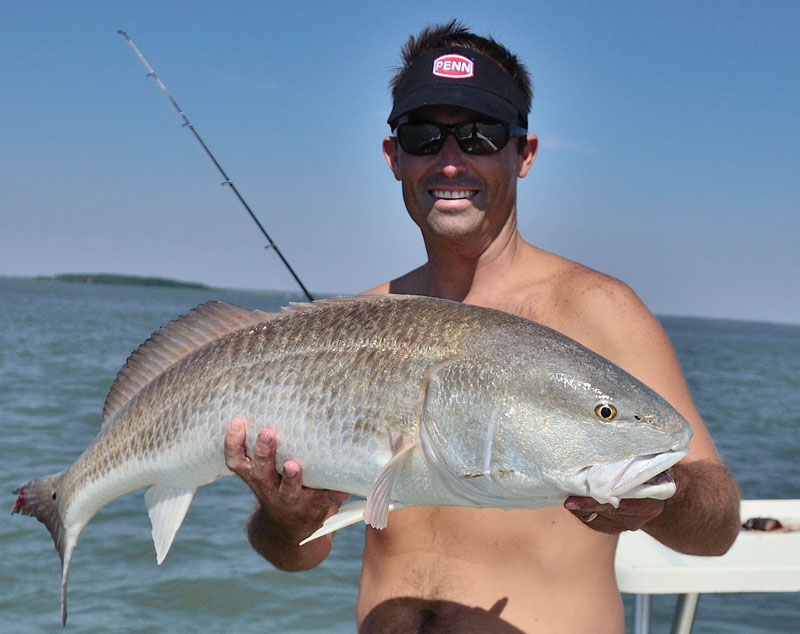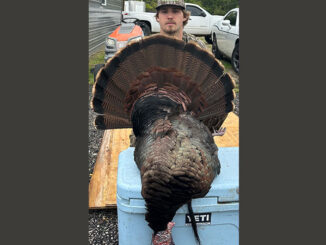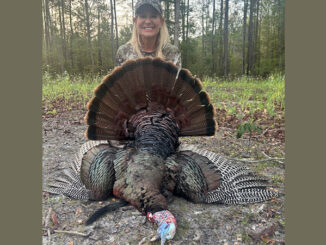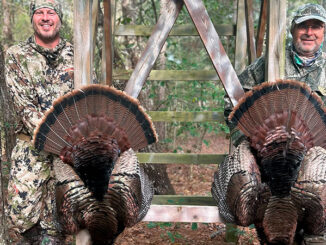
Bull reds will bite through the fall season
Fall fishing arrives soon, and Little River Inlet, straddling the North Carolina/South Carolina border, is arguably one of the hottest places to be on a September day — if you want to catch multiple 20- to 40-pound redfish on the same trip.
The inlet fires up this month with old drum patrolling and gobbling up mullet and menhaden. Anglers with the know-how can burn a day’s worth of calories heaving in these spot-tailed beasts.
With bait becoming abundant, Little River is one of the first fisheries to fire off with bull reds. The fertile, tea-colored waters emptying into the ocean through the inlet makes them a seasonal hotspot and not to be missed during the fall run.
“We start catching them at the end of August. And they generally peak around the end of September,” said guide Tom Cushman of Calmwater Charters (843-997-5850). “The baitfish are thick this time of year. And the big reds are taking full advantage of it.”
Look for bait
The reds move and can be found along the beaches. But they are generally congregated anywhere bait is abundant.
“Mullet and menhaden are thick. And the inlet will have a steady flood of food coming in and out. The reds stack up,” he said.
Baitfish will be continually flushed in and out of the inlet with the tide. Cushman said fishing on both incoming and outgoing tides can be great.
“Both the incoming and outgoing tides can be good,” he said. “On some days, the incoming is better, and the outgoing is better on other days.”
Cushman prefers to drift in or out, with the current dragging baits along the bottom. Or he will anchor up just beyond the channel at the end of the inlet on the outgoing tide.
“The big reds cruise just outside of the inlet on the falling tide and will scoop up bait as it flushes out,” said Cushman. He uses either menhaden or mullet, depending on what is available when he fishes. He will use the same baits as chum.
Experiment with bait choices
“Chumming will help bring fish to the boat. I trickle chunks … out by hand,” said Cushman, who uses a combination of live bait, cut bait and even some live bait with short tails.
“It’s kind of like catfishing in the ocean. Sometimes the live bait, the cut bait, or the baitfish with the tail cut off is the hot bait of the day. Other days, the other bait will be the winner,” he said.
Cushman urges anglers to use extreme caution when handling these fish. Many bull reds get the short end of the stick and don’t make it to their next birthday due to poor handling.
“Many big reds have been swimming in these waters for 20 to 40 years, and the last thing you want to do is kill them,” he said. “Anglers need to use circle hooks and heavy equipment to get them to the boat quick and then release them fast.”
Fish-handling techniques can make a huge difference in the number of release mortalities. Anglers should avoid holding the fish up using mouth grippers. They can be used to gain control of the fish’s head, but their bodies must be supported, and the fish need to be released as soon as possible.
The bull redfish bite turns on around Labor Day and will continue until the water cools significantly in late October. It’s a fun fishery that many anglers get excited about.





Be the first to comment